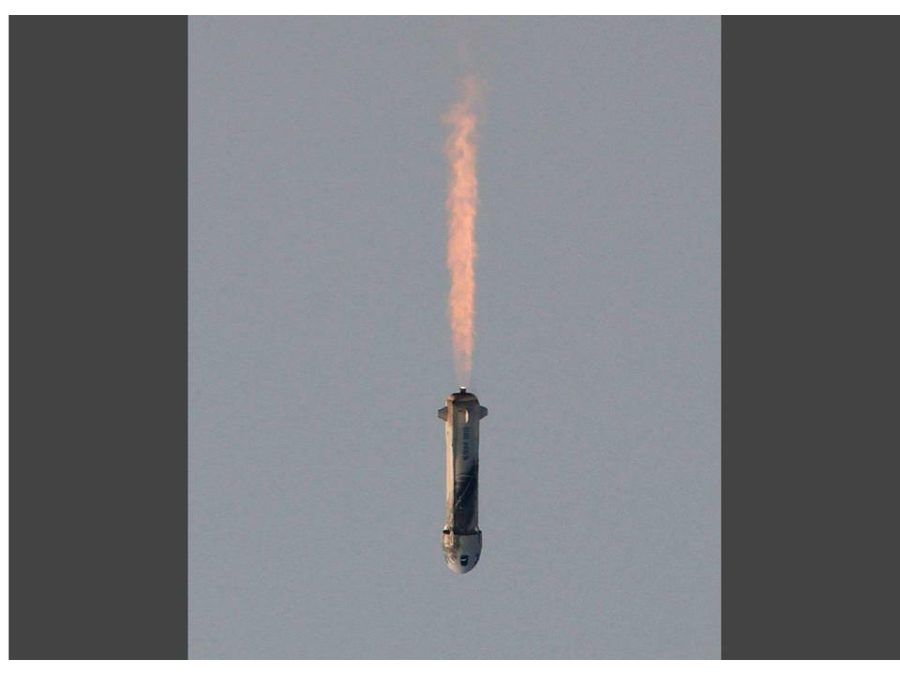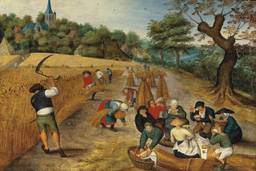GDP: A Countdown to Doom
The numbers we use to measure the economy’s recovery from Covid also measure the rate at which we barrel into ecological catastrophe.
Joseph Bullington

In the depths of last year’s Covid-19 lockdown, between the case counts and death counts and reports of economic stagnation, other news offered glimmers of life spared.
The internet flooded with videos of animals returning to their ancestral stomping grounds to find them paved over and crowded with houses full of gawking humans. New York City-based writers heard birds outside their apartment windows, realized that people are not alone on Earth and wrote about it. In global megacities, the smog cleared to less-lethal levels. Carbon emissions fell by 6.4%. In some ecosystems, habitat destruction slowed. On the news site Mongabay, which reports on the state of Earth’s forests and wildlife, writer Ashoka Mukpo put it this way: “For a battered planet, the international coronavirus pandemic has so far been — at least temporarily — an eerie reprieve.”
It was indeed temporary: As the economy came out of lockdown, greenhouse gas emissions, air pollution and other markers of industrial progress came chugging back up to pre-pandemic levels. But the stallout vividly illustrated the correlation between economic growth and environmental destruction. And in this way the pandemic made at least one thing inescapably clear: The corporate capitalist economy ― the “normal” our leaders are so anxious to return us to ― is poisoning us and, in its day-to-day operations, destroying the natural systems that we depend on for our lives.
In a 2017 report, the Organization for Economic Co-operation and Development (OECD), tried to quantify the relationship between economic growth and environmental destruction. OECD countries, the report found, consumed on average 917 pounds of non-energy raw materials and 245 pounds of energy products (oil or equivalent) to generate $1,000 in Gross Domestic Product (GDP). No need to get lost in the numbers here: To sell a product, whether it’s a computer or a cup of coffee―and so contribute to the GDP, which is the total of all products sold―the raw materials to make the thing must first be ripped out of the ground somewhere then processed, manufactured, and shipped using both fossil fuels and minerals like copper and iron that were ripped out of the ground somewhere else, while the byproducts are dumped into tailings ponds, creeks and the atmosphere.
You don’t have to be an economist or an ecologist to understand that this system is going to take a toll on the ecosystems being ripped apart or to see that the toll is going to escalate in relation to how much the system grows and produces. And people have been pointing this out for a long time. Jonathan Rowe, Clifford Cobb and Ted Halstead put it this way in a 1995 feature in The Atlantic: “GDP not only masks the breakdown of the social structure and the natural habitat upon which the economy — and life itself — ultimately depend; worse, it actually portrays such breakdown as economic gain.” We’ve known this blindness of GDP since long before the pandemic, but the pandemic made it harder to ignore.
Nonetheless, economists and journalists have trotted out GDP and other trusty growth metrics to measure our recovery from the Covid slump. These celebrations of economic growth were hard enough to bear in normal times, but if you let your guard down a little you could almost believe in it ― the great march of unending progress. The optimism was infectious. But in these days of heat waves and hurricanes and a less-measurable sense of impending doom, this bright blathering about GDP growth and “consumer spending” grates and screeches against lived reality in an unbearable cacophony.
These numbers have never measured things that really matter ― freedom, equality, joy, love, mystery, connection, health. But now we are troubled by what we know they do measure: The numbers counting our way out of this crisis also mark the rate at which we barrel into the next ones ― ecological and social breakdowns that could make Covid look like a playful warm up. To hear the numbers cheerfully recited on the radio or television provokes the unpleasant sensation of being in a bus careening toward a cliff while the driver crows out the speedometer readings.
Now, I don’t expect journalists or economists will, overnight, give up on trying to quantify the economy. So, to you journalists and economists out there, I propose this compromise: If you insist on using such metrics as GDP and consumer spending, in the name of balance you must pair them with statistics that paint a fuller picture of the state of our economy and our world. This quarter’s GDP growth, for example, should be paired with this quarter’s carbon emissions, or number of species extinctions, or acres of habitat destroyed, or number of small farmers kicked off the land, or number of hours of human life wasted at bullshit jobs. You know, real stuff―numbers that describe the world we actually live in.
Some try to muddy the water about the direct link between economic growth and ecological destruction. The authors of the 2015 “Ecomodernist Manifesto” argue that no “fixed physical boundaries to human consumption” exist, or if they do “they are so theoretical as to be functionally irrelevant.” Economic growth and consumption, the Ecomodernists argue, can be “decoupled” from environmental destruction. How? “Given plentiful land and unlimited energy,” they write, “substitutes for other material inputs to human well-being can easily be found.” Those are quite the “givens,” given that neither exists ― and what was that about “so theoretical as to be functionally irrelevant”? But anyway, the authors’ plan is clear enough: Replace raw material inputs with energy inputs, and GDP can keep right on growing. Where will all this energy come from? The manifesto mentions nuclear and solar power. Picture uranium mines in the Utah desert, nuclear waste storage facilities, rural sacrifice zones linked to the cities by high-voltage transmission lines. Picture the industrial copper mine about to be bored into the sagebrush hillside above the Montana stream where my dad taught me to fish. (Wind turbines, solar panels, electric cars―they all need copper, says the mining company.)
The Ecomodernists’ arguments are unconvincing at best and sinister at worst but they illustrate a burgeoning thought trend: “decoupling” humans from nature. Likewise, many economists want to keep counting infinite GDP growth as if the economy runs in a vacuum, detached from the resources it consumes. Jeff Bezos, the richest human on Earth, or off it, envisions people living in giant cylinder-shaped space colonies, where, he says, “the solar system can easily support a trillion humans.” Elon Musk, Bezos’s main competitor in the billionaire space race, has chosen to focus instead on human settlement of Mars.
In short, many of the people who run our world no longer seem interested in living on it. Their vision for a human future involves escape from Earthly bonds, from Earthly limits. It’s a fantasy, of course, but a useful one―those who profit from this economy can pretend a world (or solar system) exists that’s big enough to hold their greed. This allows them to go on pillaging our Earth while we wait in the sweltering heat for their promised technological salvations and “decoupling.”
These billionaires’ money will probably insulate them for a time from the consequences of their fantasy. They may even think they’ve succeeded in their escape. Meanwhile, the rest of us will find out the hard way that we do, in fact, live on planet Earth.
How can we learn to live here? What would it look like to start bringing our economies down to earth, to become “earthbound,” as the French thinker Bruno Latour argues we must? That is the fraught and joyful challenge of our time. Best of all, we need not wait for permission from governments, corporations or nonprofit organizations to start experimenting with answers, to start learning from those who have been at it for a long time already. Earthbound economies will necessarily be more local, bioregional, different from one another ― so any grand plan I could offer here would only get in the way eventually.
What matters more than prescriptions for the future is that we pick a direction. To be earthbound, as in bound for Earth, is to head in the opposite direction from Bezos on his rocket, from the decouplers, from the GDP fanatics. It is to learn and trust the ground we stand on, even when it heaves and floods and bursts into flame. To trust it especially then, for it doesn’t lie and it can’t be argued with. We live here. I, for one, would like to keep living here.
Joseph Bullington grew up in the Smith River watershed near White Sulphur Springs, Montana. He is the editor of Rural America In These Times.







